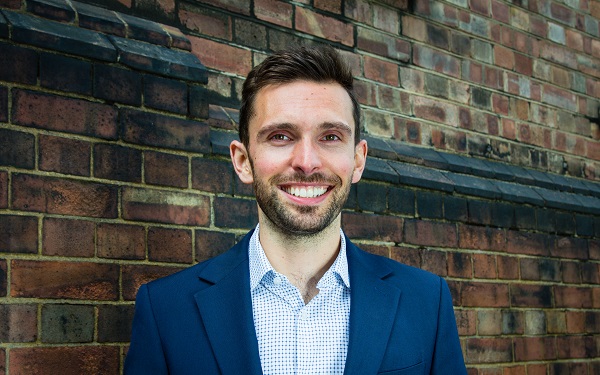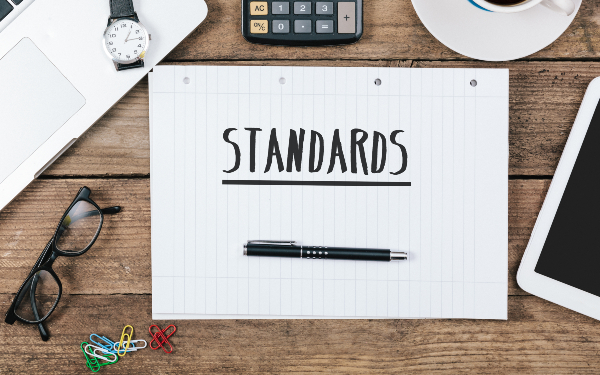
The Department for Education has proposed far-reaching changes to social workers’ roles under Working Together to Safeguard Children, its guidance on services for children in need of help and protection in England.
The revisions are a key plank of the DfE’s proposed reforms to children’s social care, articulated in its draft strategy, Stable Homes, Built on Love, published in February.
As statutory guidance, relevant agencies and practitioners – including local authorities and their social workers – must comply with Working Together unless exceptional circumstances arise.
Here’s a summary of the main changes for practitioners.
From social workers to lead practitioners

Photo: New Africa/Adobe Stock
The current Working Together, which mostly dates from 2018, is a very social work-focused document, mentioning the term ‘social worker’ 63 times. The vast majority of these references are to roles and responsibilities that the DfE expects social workers, uniquely, to carry out.
By contrast, the proposed update to the guidance mentions ‘social worker’ just 23 times.
Those lost references to social workers have been replaced by the concept of the ‘lead practitioner’, mentioned just six times in the current version but 32 in its proposed replacement.
Under the proposed revisions, ‘lead practitioner’ would become the generic term for the case-holder across all areas of intervention: early help, targeted early help, child in need and child protection.
The 2018 Working Together requires both child protection and child in need cases to be held by social workers.
The revised version would only mandate this in child protection cases; child in need cases could be held by lead practitioners from a range of backgrounds.
The consultation document on the changes suggests that alternatively qualified practitioners could include family support workers, drug and alcohol practitioners, domestic
abuse workers and youth workers.
However, crucially, cases would be overseen by ‘a social work qualified practice supervisor or manager’ (see below).
Changes to child in need guidance
Currently, Working Together states: “Following acceptance of a referral by the local authority children’s social care, a social worker should lead a multi-agency assessment under section 17 of the Children Act 1989.”
It further says that social workers should:
- Complete the assessment in line with local protocols.
- See the child within a timescale appropriate to the nature of the concerns expressed at referral.
- Conduct interviews with the child and family members, separately and together as appropriate.
- Record the assessment findings and decisions and next steps.
- Inform all agencies and families of the decisions and, if the child is a child in need, the plan for support.
- Inform the referrer of the outcome.
Under the revised version, all of these tasks would pass to ‘lead practitioners’, who need not be social workers.
However, it would be for a social work-qualified practice supervisor or manager to:
- Initiate the multi-agency assessment.
- Agree with partners who the most appropriate lead practitioner should be and allocate them to the case.
- Approve the lead practitioner’s assessment.
- Review and approve the plan for the child.
- Meet families and attend home visits where appropriate.
Rationale for child in need reform

Care review lead Josh MacAlister
The removal of the requirement for social workers to hold child in need cases was a direct recommendation from last year’s final report of the Independent Review of Children’s Social Care, led by Josh MacAlister.
It was tied to its broader proposal – also accepted by the DfE – to merge targeted early help with child in need services under a new ‘family help’ function.
This was designed to capture the original intention of section 17, to “safeguard and promote the welfare” of children who are unlikely to reach or maintain “a reasonable standard of health or development” without support.
This meant it was designed for families with a broad range of needs, not just those with high need whose children tend to be classified as being in need; as such, it was appropriate for practitioners other than social workers to take the lead in some cases, particularly as they may already have developed relationships with the family.
The DfE has accepted this, saying in its Working Together document: “We want to ensure the right people, with the right knowledge, skills and relationships, provide families with support at the right time, whilst keeping children’s safety and wellbeing at the centre of decision-making, planning and the provision of services.”
The latter point is captured by the requirement that social work-qualified supervisors or managers allocate and oversee the case – again as recommended by the care review – while the DfE also stresses that local authorities may stick to the status quo and reserve child in need cases for social workers.
Early help changes
The full implementation of the family help model is a few years away. Three pathfinder areas will start testing the approach later this year, with a further nine to follow next year, so Working Together will need to be further revised at the point of full implementation across England.
The current proposals are designed to “lay the foundations for this future system”, the DfE says. Besides the change to child in need case-holding, this includes proposed revisions to the guidance in Working Together on early help, including:
- Extending the groups of children who may have a potential need for early help to include those viewing problematic and/or inappropriate online content or developing inappropriate relationships online, those missing education and those who are at risk of school exclusion.
- Stating that early help assessments take account of the needs of all members of the family as individuals and consider how their needs impact on one another.
- Specifying that such assessments should also provide the basis for any future assessments if they are needed, for example, under sections 17 or 47 of the Children Act.
- Stating that social workers may be the ‘lead practitioner’ in early help cases, contrary to the current version of the guidance, which lists GPs, family support workers, school nurses, teachers, health visitors and special educational needs co-ordinators as possible case leads.
Increasing the use of family group conferences

Photo: zinkevych/Fotolia
Drawing on the care review, Stable Homes, Built on Love seeks to increase the role of family networks in supporting children to stay with their parents, providing care where they cannot and in making decisions about what should happen earlier than is currently the case, including through family group conferences (FGCs).
Currently, Working Together makes no reference to FGCs. They are referenced in separate statutory guidance on court orders and pre-proceedings, which states that councils should involve wider family members in decision making where there are child protection concerns, including through considering referral to an FGC.
However, in line with Stable Homes, the draft revised Working Together would promote the use of FGCs from early help onwards.
“Local authorities should consider referring the family to a family group conference service if they believe there is a possibility the child may not be able to remain with their parents/carers, or in any event before a child becomes looked after, unless this would be a risk to the child,” the draft version states.
“They should be a family-led forum, where a family network has all the resources, adequate preparation, relevant information, a safe and appropriate environment, and ‘private family time’ to make a plan to respond to concerns about a child’s safety or wellbeing.”
National child protection standards

Photo: MichaelJBerlin/Adobe Stock
In relation to child protection cases, there would be no change to the status quo on case-holding under the draft revised Working Together, which states that the ‘lead practitioner’ for section 47 enquiries must be a social worker.
One change it would introduce would be a set of national multi-agency child protection standards, in response to a recommendation from last year’s Child Safeguarding Practice Review Panel’s report into the murders of Arthur Labinjo-Hughes and Star Hobson.
That inquiry identified a disconnect between the seriousness of the state’s child protection responsibilities and the lack of standards on how to do it, in the context of the serious failings it found in both Arthur’s and Star’s cases. It said national standards would also give practitioners from different agencies a common framework from which to operate.
In its consultation document on revising Working Together, the DfE said these standards “set out the actions, considerations and behaviours that should lead to improved child protection practice and better outcomes for children”, and were based on “best practice evidence”.
While some are for all practitioners coming into contact with children, the majority are for those directly involved in child protection work (see below).
Proposed standards for specialist practice
The draft revised version of Working Together proposes the following standards for specialist child protection work:
- Practitioners are aware of the limits and strengths of their personal expertise and agency remit, and work collaboratively and proactively with multi-agency practitioners to build an accurate and comprehensive understanding of the daily life of a child and their family to establish the likelihood of significant harm and any ongoing risks.
- Practitioners respect the opinions, knowledge and skills of multiagency colleagues and engage constructively in their challenge
- Practitioners have an applied understanding of what constitutes a child suffering actual or likely significant harm; they consider the severity, duration and frequency of
any abuse, degree of threat, coercion, or cruelty, the significance of others in the child’s world, including all adults in contact with the child, and the cumulative impact of adverse events. - Practitioners take care to ensure the children know what is being discussed about their family and ask them what they would like to happen and what they think would help them and their family to reduce the likelihood of significant harm.
- Practitioners engage parents and the family network, as appropriate, in the discussions, recognising that previous involvement with agencies and services may influence how they engage.
- Practitioners thoroughly explore the significance of the adults in contact with the child and their family or individual histories, paying particular attention to any serious criminal convictions, previous allegations of child abuse, domestic abuse or impulsive violent behaviour, restrictions on contact with children or involvement with children subject to child protection plans or care proceedings
- Practitioners satisfy themselves that conclusions about the likelihood of significant harm give sufficient weight to the views, experiences and concerns of those who know the child and/or parents well, including relatives who are protective of the child, and other relevant practitioners.
- Practitioners share their thinking and proposed recommendations with other practitioners who hold relevant information and insight into the child and adults involved with the child. They comment, challenge, and jointly deliberate, recognising the impact of bias, before making a final judgement about the likelihood of significant harm.
- Together with other agencies, practitioners clarify what family help from multi-agency partners is necessary to reduce the likelihood of significant harm and maintain reasonable care for the children.
- Practitioners explain clearly to parents and the family network the implications of the threshold that has been reached for section 47 enquiries, the initial child protection
conference and any ongoing child protection plan, including that this threshold may lead to pre-proceedings, should the likelihood of significant harm not reduce. - Practitioners remain alert to changes in circumstances for the child and family and respond as new information comes to light that needs to be reflected in the child protection plan.
- Practitioners reflect on the proposed protection plan and consider adjustments to strengthen the protection plan.
Have your say
The consultation on the revised Working Together runs until 6 September 2023.
You can respond by answering this online survey or emailing workingtogether2023.consultation@education.gov.uk




 Assistive technology and dementia: practice tips
Assistive technology and dementia: practice tips  A trauma-informed approach to social work: practice tips
A trauma-informed approach to social work: practice tips 




 Find out how to develop your emotional resilience with our free downloadable guide
Find out how to develop your emotional resilience with our free downloadable guide  Develop your social work career with Community Care’s Careers and Training Guide
Develop your social work career with Community Care’s Careers and Training Guide  ‘Dear Sajid Javid: please end the inappropriate detention of autistic people and those with learning disabilities’
‘Dear Sajid Javid: please end the inappropriate detention of autistic people and those with learning disabilities’ Ofsted calls for power to scrutinise children’s home groups
Ofsted calls for power to scrutinise children’s home groups Seven in eight commissioners paying below ‘minimum rate for home care’
Seven in eight commissioners paying below ‘minimum rate for home care’
 Facebook
Facebook X
X LinkedIn
LinkedIn Instagram
Instagram
Note that it doesn’t say that the “lead practitioner” needs to be working for the local authority.
This leaves open the prospect of a remote team of Social Work Practice Supervisors allocating Lead Practitioner roles to other agencies, e.g. schools, health visitors and simply oversighting their assessment.
Whilst there is a positive stated intention of having children supported and assessed by those that know them, and already have relationships, there is also a significant risk of the social work being hollowed out, and social work functions being passed over to already overstretched education, health and voluntary sector organisations.
Assigning a social worker once Child Protection concerns are established is too late, and misses the key messages from the Star Hobson and Arthur Labinjo-Hughes reviews that the “pieces of the puzzle” need skill and understanding to pull together – a key skill of qualified, experienced and curious social workers.
I totally agree part of child in need is the skill at recognising when something is not working and risks are increasing – another way of diluting the social work role and the person who has oversight having the responsibility if something goes wrong. As a senior practitioner there is a reliance on experienced and qualified staff knowing when to escalate and I think that this may be lost under these practices .
I strongly agree with the revised version of Working Together however Social Workers and Teachers always working together and information always changed but most time some party do not write down or passed on information such as children coming from another Local Authorities that is Child Protection order the parent (s) does give the school that information. Only when they come in contact with problems and the teacher make a referral them this come to light. I believe all children’s social care should be link up to one date base that when the family move the children may be track. There’s massive issues happened in children social care especially since the COVID pandemic several children loss in the community and they become victims to the drugs Brant as currier and many have loss in the mental health system as they can’t get appointments.
This is a route which will confirm the reset of social work with children and families as not about help and assistance but as remote and threatening child protection risk assessors and risk managers. Social work will be re-framed as about investigations, surveillance and monitoring and initiating the compulsory removal of children from families. Help for children and families will be left to non-statutory (and therefore vulnerable) voluntary and community services and with the door wide open to commercial companies, to unqualified workers, and to hard pressed colleagues in schools, health services and the in the voluntary sector. They will get no additional time or resource as the priority will always be on maintaining capacity in what will increasingly be a stand alone local authority social work child protection service. There is an alternative – local authority and other social workers embedded within communities alongside other colleagues providing a skills mix within multi-professional teams and services with accessibility and acceptability as a resource for families and protecting and caring for children when necessary. It is a continuum and continuity of help and care rather than the step change and cliff edge of being passed on to a local authority separate child protection service staffed by social workers. The English government’s proposed intentions – in part following the English review of children’s social care – are likely to lead to more child protection investigations as the route for other workers and agencies (especially in the context of mandatory reporting) to get any involvement of experienced social workers, more child protection plans and monitoring of families as the means of enabling the continuing involvement of experienced social workers, more children compulsorily removed from families as difficulties for families are not addressed, and with struggling families in the midst of increasing poverty getting less help in the context of inadequate, insecure and non-prioritised service funding..
Absolutely agree
So social worker stillstuck with high caseloads and at risk of getting cases at a later stage for when’ the babe ‘s been almost thrown out with the bathwater. I hope that employers,ie local Authorities will cough up for staff’s counselling sessions.
I also remember a time when we had children on the “at risk register” who should not have been on it for the simple reason that registration was the only way to guarantee access to the additional services the children and their families needed.
The plans do not seem at all thought through in my opinion. I think to really make it work, it needs funding to put into training for various staff, services, resources. Just tinkering around the edges or come up with some harebrained plan because we got to is not helpful and puts children, families and workers at risk.
I have worked as a local authority children and families social worker for nearly 25 years, it is saddening to have experienced the change from working to keep children in the family unit at all costs ( where safe) going into a family home putting on a pair of rubber gloves and dealing with crisis for a parent experiencing hard ship.
To the position where just last week a child was prevented going on a school trip to the beach ( as means of behaviour modification) when I challenged stating that the mother of the child was experiencing financial hardship, I was told by an early help worker ( who do not study sociology, anti oppressive practice etc) well she can afford to smoke, she should stop then she could take her child on a day trip. The social, seems to have been lost…
Martin Calder states … where there is need there is risk. (2003)
What a load of complete nonsense.
This (the review) has nothing to do with improving families lives and protecting children.
But as with every other change has everything to do with costs.
Why don’t the government take account of every single review from munro – to laming – and every serious case review in between.
Hire more social workers – pay them appropriately – which will fix just about every issue. You don’t need theory or any review to realise this – just ask any of thousands of social workers who have to work from the local authority charade handbook.
As a child in care – care leaver – qualified social worker of nine years, I am ashamed at how this country ‘protects’ its children.
Remove social care funding from local authority decision makers – raise the funding every year with the rate of inflation – then you will likely find managers are able to forward plan the next 10, 15, 20 years of service – versus trying to keep whichever local political party is in power happy.
After nine years of this nonsense – very happy to say I will be leaving the career next month, and with each community care article that is printed – I become more and more happy and confident in my secession making.
What a sh*t show.